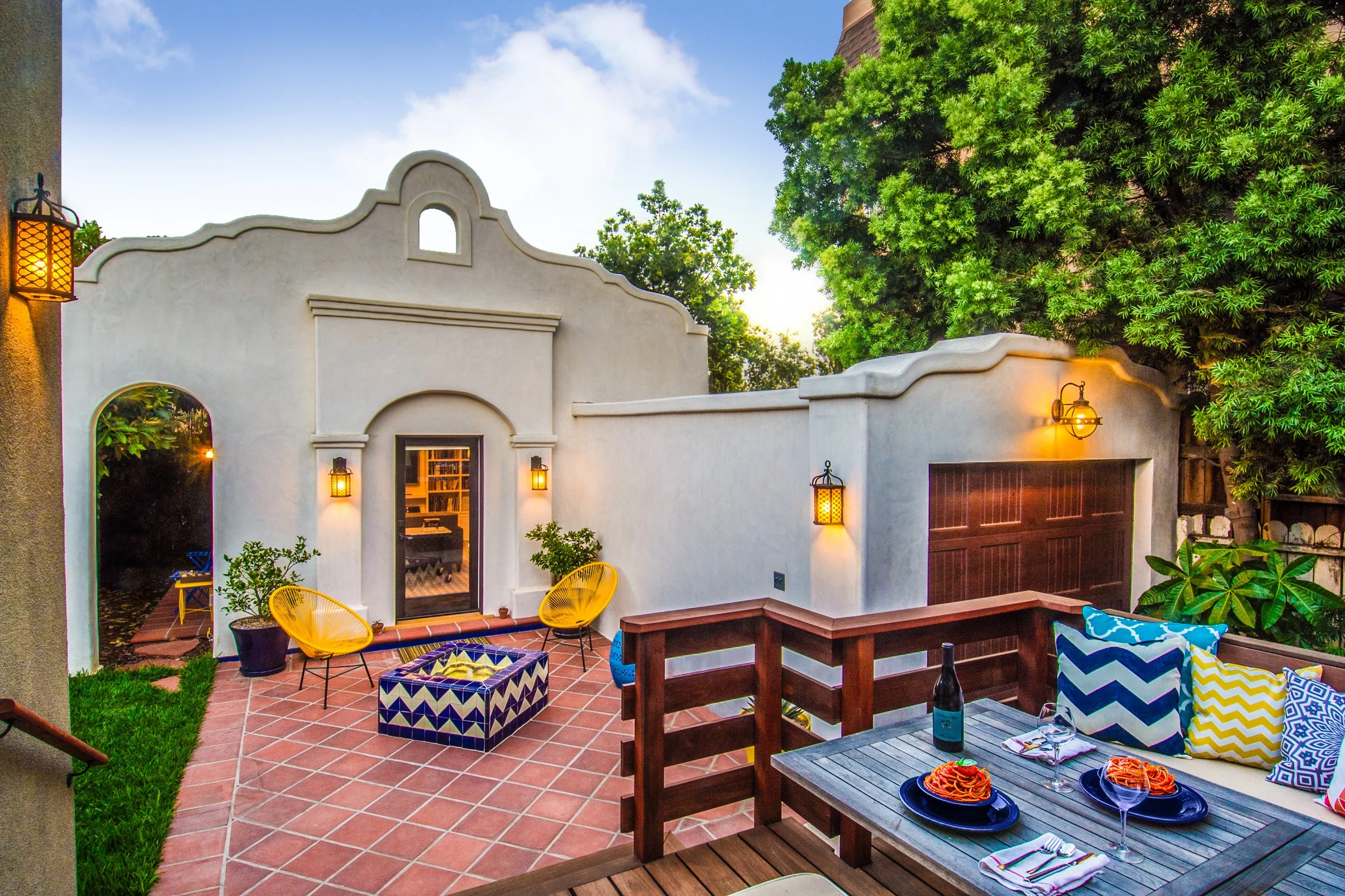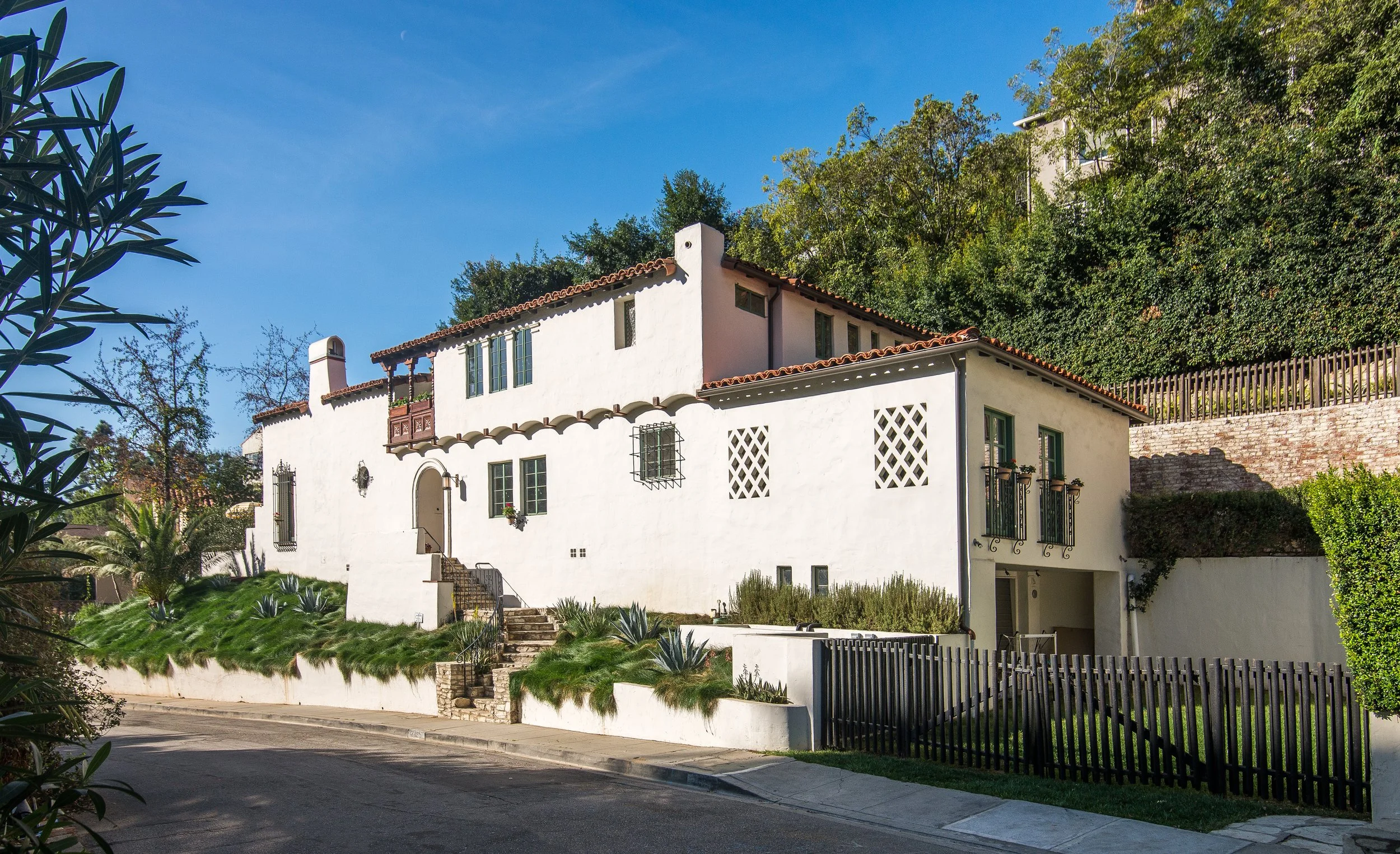Mission Revival vs. Spanish Revival: What’s the Difference?
Understanding Two Iconic Architectural Styles of Southern California
In Los Angeles, it’s not uncommon to hear “Mission Revival” and “Spanish Revival” used interchangeably and while they share DNA, the two are distinct in history, style, and emotional impact.
Whether you’re a homeowner looking to renovate or a design lover exploring architectural heritage, this breakdown will help you appreciate the nuances and understand which style your home aligns with.
1. Shared Roots, Different Expressions
Both Mission Revival and Spanish Revival styles are inspired by early Spanish colonial architecture in California. They gained popularity during the late 19th and early 20th centuries, driven by nostalgia for the missions and a romanticized view of California’s past.
But they express this heritage in different ways:
Mission Revival
Origin - Inspired by the 21 California missions
Roof - Low-pitched red clay tile or flat roof with parapets
Windows - Simple arched openings, often small
Ornamentation - Minimal smooth stucco, few embellishments
Facade - Symmetrical, plain stucco walls
Vibe - Monastic, calm, structured
Spanish Revival
Inspired by broader Spanish architecture incl.
Andalusian, Moorish, and Baroque influences
Red clay tile with deeper eaves and complex profiles
Decorative grilles, arched windows with wood or iron detailing
Rich in detail tilework, wrought iron, carved wood
Asymmetrical, often with towers, balconies, niches
Romantic, eclectic, expressive
2. Where You’ll Find Mission Revival & Spanish Revival Homes in Los Angeles
Mission Revival is more common in civic buildings, early 1900s homes, and historic neighborhoods like Highland Park, Boyle Heights, and parts of South Pasadena.
Spanish Revival saw a design boom in the 1920s–30s, appearing in residential areas like Los Feliz, Hancock Park, Pasadena, and West Adams.
3. Why You Should Know Your Home’s Architectural Style for Remodeling
Knowing your home’s architectural style is more than a trivia point; it influences everything from design choices to permitting.
Mission Revival remodels often aim to preserve minimalism and quiet form, while Spanish Revival remodels celebrate drama, texture, and craftsmanship. Mixing the two can lead to design confusion or worse, disjointed additions that reduce resale value.
At HFB, we specialize in honoring your home’s core style while updating it for today’s living. That means:
Using period-appropriate materials and forms
Custom-building features like tile, ironwork, and cabinetry
Integrating modern systems without disrupting historical details
4. Can a Home Be Both Mission Revival & Spanish Revival?
Absolutely, especially in LA, where decades of additions and updates have created hybrids. That’s why we always start with a deep design and architectural review before recommending any plan.
5. How Can You Find Out What Style Of Home You Own?
You're not alone. Book a consultation with our team and we’ll help identify your home’s lineage and guide you through a renovation that makes sense emotionally, structurally, and financially.







